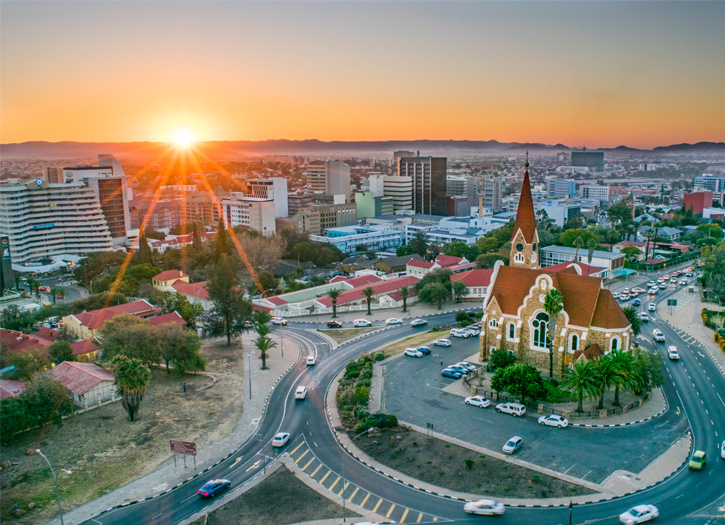The COVID-19 pandemic in Namibia is part of the worldwide pandemic of coronavirus disease 2019 (COVID-19) caused by severe acute respiratory syndrome coronavirus 2 (SARS-CoV-2). The Minister of Health and Social Services, Dr. Kalumbi Shangula, announced on 14 March 2020 that the virus had reached Namibia.
On 17 March 2020, President Hage Geingob declared a state of emergency which introduced measures such as the closure of all borders, suspension of gatherings and economic related resolutions. The Ministry of Health and Social Services also established an Emergency Response team, operating 24/7, which aimed to intensify the surveillance of COVID-19 in the country, especially at the borders of Namibia. On 28 March 2020, the country went into a full lockdown. As of September 2020, Namibia was within the top 18 number of countries with the most COVID-19 cases reported in Africa. Although Erongo lead with the most cases and deaths, Khomas region started to experience a community outbreak and numbers rose exponentially to match that of Erongo. In mid-September, most restrictions were lifted after a significant decrease in daily cases.
On 14 March, Namibia reported its first cases of COVID-19, caused by SARS-CoV-2. They were a Romanian couple who arrived in Windhoek from Spain via Doha, Qatar, on 11 March. They had been screened on arrival at Hosea Kutako International Airport but showed no symptoms at that time. The couple presented to a private health facility with flu-like symptoms in Klein Windhoek and was referred for testing. At that time, Namibia did not have the capacity to test for COVID-19, so tests had to be sent to South Africa.
6 August: Cases rose to 2,652. Cases were mainly from the Erongo region, however cases were also detected in other parts of the country, especially in the northern parts and in the capital, Windhoek.One week later, the total number of confirmed COVID-19 cases increased with almost 1,000 new cases, with the 3,000 mark reached on 10 August. As of 14 August, there was a total of 3,726 confirmed cases in the Namibian territory. Although most of the cases arose from Walvis Bay and Swakopmund, both cities which are experiencing a current outbreak, the capital also recorded a high spike in cases.
September started off with 7,692 cases of COVID-19. Although cases were still increasing exponentially, a slight decrease was observed during in the preceding week. On 2 September, Khomas and Erongo regions both had 3,400+ cases.During the period of 2 September—12 September 2020, Khomas had 897 new cases, while Erongo only had 181 new cases. !Karas region had 100. By this time, it has already been established that the Khomas region; in particular Windhoek, the capital, was the hotspot of the country with the most cases and most deaths.The 10,000-mark was reached on 17 September 2020.
In a first reaction on 14 March, when the first cases were confirmed, government suspended air travel to and from Qatar, Ethiopia and Germany for 30 days. Later, on 18 March 2020, all ports of entry were closed from highly affected countries (i.e. most Schenghen countries). All public and private schools were closed for a month, and large gatherings were prohibited. This included celebrations for the 30th anniversary of Namibian independence that was to take place on 21 March. Libraries, museums, and art galleries were also closed.
The Government also announced on 18 March that it will strengthen their communication to the public via various platforms, such as the COVID-19 communication centre operated by NBC, in an attempt to “mitigate and refute misinformation, fear and panic especially from social media”.The centre was fully functional by middle April 2020.With the establishment of a multi-disciplinary Emergency Response team, the Ministry intensified their surveillance in monitoring the situation of COVID-19 in the country, especially at the borders of Namibia. The response team operates 24/7.As per the regulations of stage 1 and the proclamation of the State of Emergency, all schools, early development childhood centres and tertiary institutions should be closed, and attendance is prohibited. Schools are to reopen in a phased manner – necessitating the grades with higher priorities and workload.







Add Comment